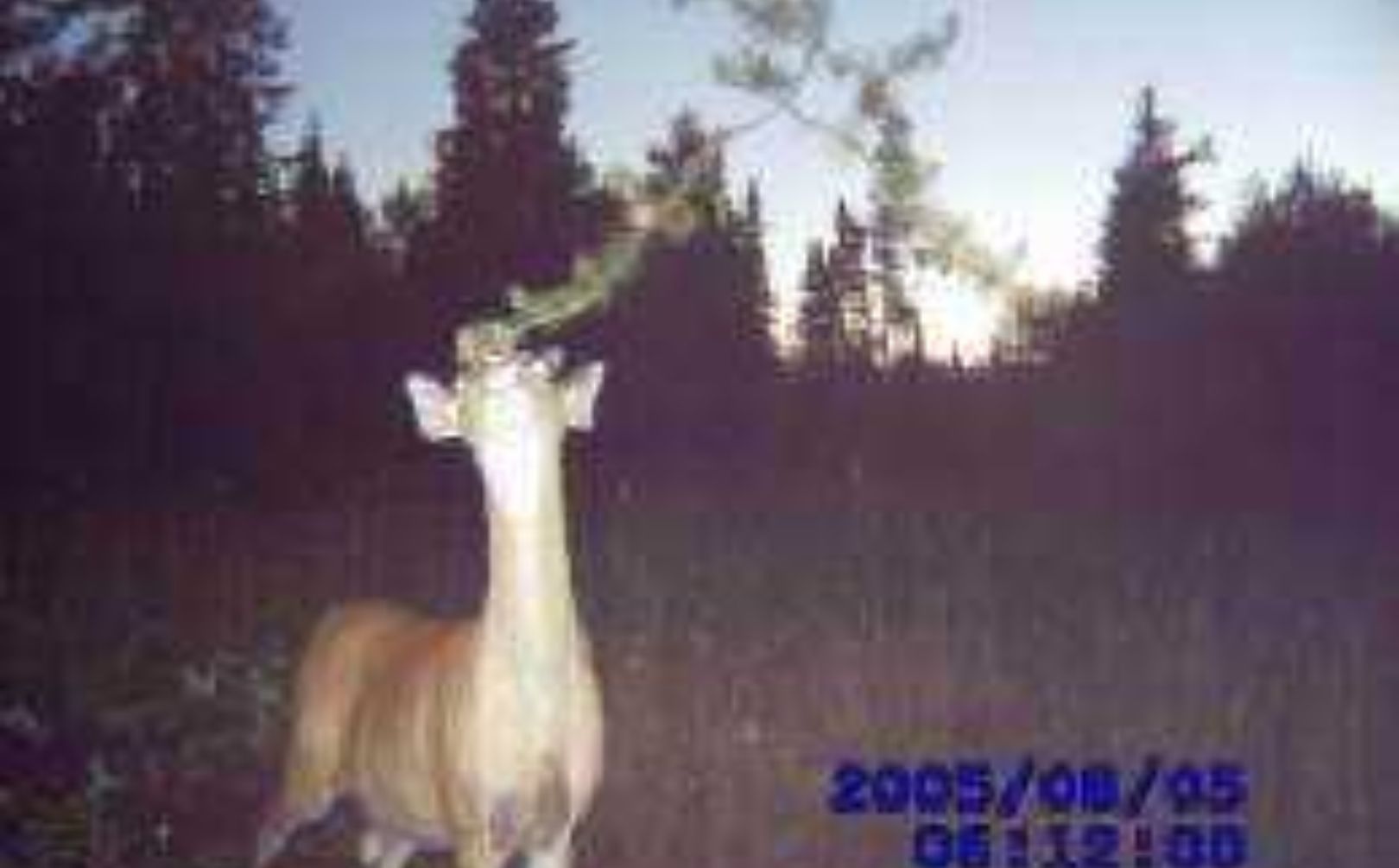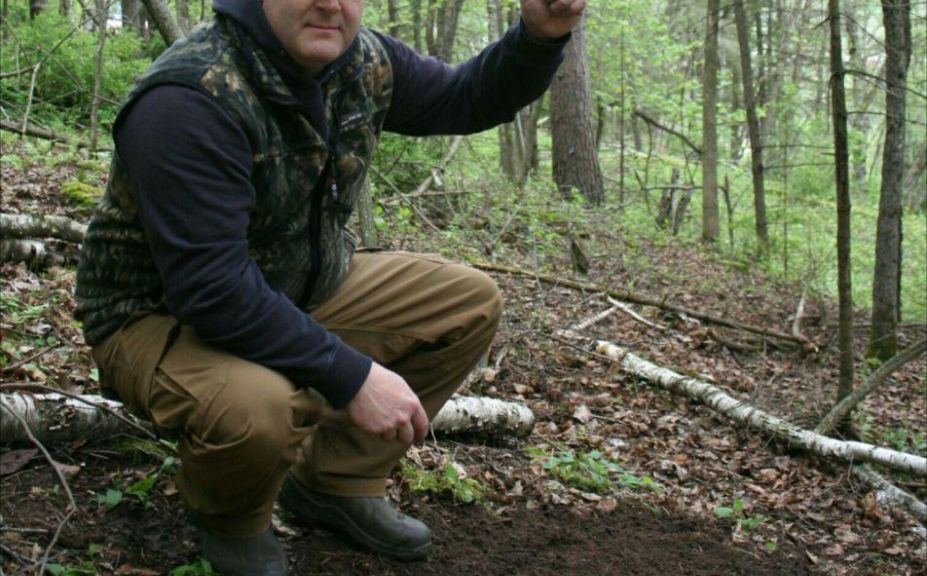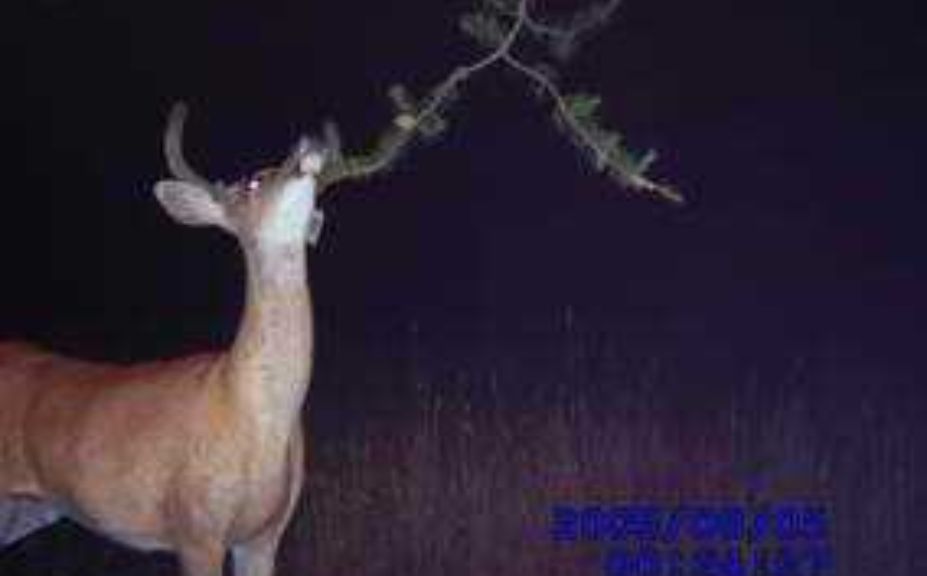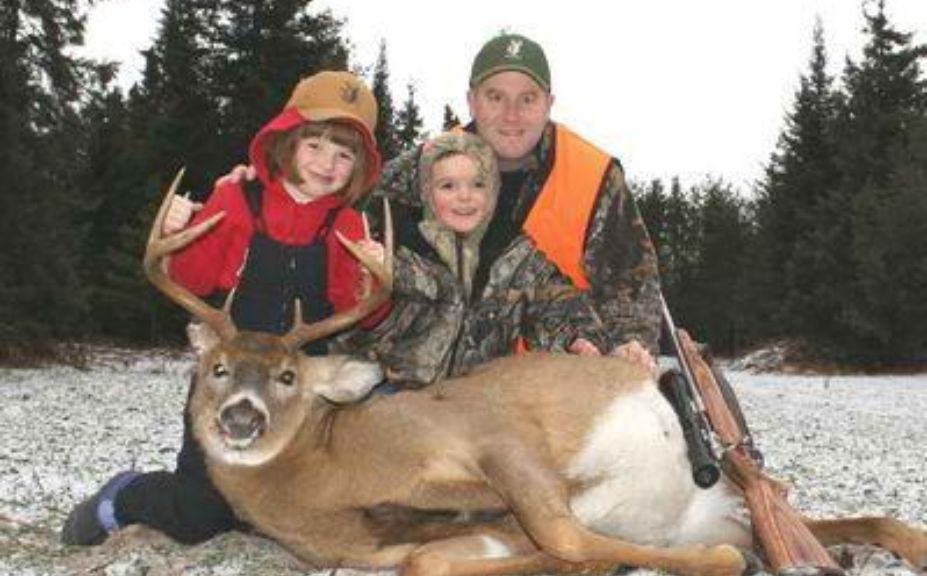
Why do you use a mock scrape? I believe the 3 major uses of mock scrapes are as a management tool, to assist in the establishment of patterns of usage, and for hunting season attraction. Also, sometimes the process of starting your mock scrapes could be as simple as, well…drinking enough water.
As a Management Tool
One of my favorite uses of a mock scrape is as a management tool. As someone who is concerned about the exact number of bucks within the area, including their ages and individual recognition, a mock scrape is a wonderful tool to enhance a camera location. However, the problem with many possible mock scrape sites is that I would never risk a camera, and/or an increase in my scent in those locations during the hunting season. I’m just very conservative when it comes to aiding the whitetail deer’s nose. I’m also a big proponent of low-impact hunting efforts as well so cameras on active scrapes, especially near stand sites, is not typically a tactic I like to employ or recommend. But, I’m not too concerned in August, prior to the bucks breaking up from their summer bachelor groups and turning to hard antler so I believe there is a decent enough “gray area” to work with.

*Make sure to check out my latest mock scrape articles by reading, “How To Make A Mock Scrape”
I think the key in an August mock scrape is to find a central active area that you can access fairly easily such as a field edge point, funnel, or within a long narrow travel corridor between large food sources and/or bedding areas. Basically an area that is away from bedding or feeding deer but that receives a lot of activity. The way you locate the exact spot, however is to find a perennial licking branch. I like finding a mock scrape location in early August that is very familiar to the local deer herd and there is no better location than using a perennial licking branch that acts as a type of social hub.
Bucks of all ages will visit the site and if you’ve just taken part in a very non-invasive way to get a “head-count” of many of the local bucks within the area. Remember though, bucks travel very little during the summer months so using at least a couple of cameras per 40 acres isn’t a bad idea.
To Establish a Pattern of Use
There are so many tactics to establish a pattern of use by the local deer herd and it’s often critical those uses are established early an often. A pattern of use is the route or usage that you want the deer to use during the summer months so that you can offer security, hunting opportunity, and low-stress movements on your land during the hunting season. On my SW WI lease property we have a major bedding area within the NE corner. Those deer exit the bedding area to the SW, working their way over 200 yards through the weeds and grasses to larger, centrally located food sources. With the aid of a 10-12’ wide twisting food plot starting 30 yards away from the bedding area behind a fencerow and extending to the major food source, we are attempting to determine exactly where the deer enter and exit the bedding area. But, we take that one step further!
The edge of the bedding area contains a continuous line of licking branches; as does the fencerow that parallels that edge only 30 yards away. So the answer is? To remove the licking branches on both edges that do not line up with the long twisting trail plot. We want those bucks to enter and exit exactly where we want them to and by doing that it makes our stand locations more effective because they are within bow range, and it makes those stand locations more secure because there is less chance the deer will get downwind of our location. By establishing this pattern in the summer and adding scents or soil disturbance, the deer will have many weeks to pattern themselves as it relates to the usage of the area.
I’ve been on client parcels where the landowner has used cables to suspend rope to assist in scrape travel patterns with mock scraping activity and I’ve personally manipulated vines through cutting and pulling to enhance many locations. To take it one step further I know that within the old deer research center in MI’s Upper Peninsula, fresh cut aspen posts were placed in the ground to encourage increased rubbing opportunity. Basically, “use your imagination” and as long as it is somewhat natural and placed early enough, a deer will typically use it and follow the pattern of use you have designed. You will find the type of scraping material you are using has little impact, but instead as long as it is natural, in the right location, and at the right height, it should receive some attention.
For Hunting Season Attraction
Anything you can do to narrow down the location to within bow range is a great tactic to employ! Often I find myself sitting on long, brushy, travel corridors connecting major food or bedding sources. I might make some low cuttings on trees to funnel the deer by my stand, use brush piles from cleared shooting lanes, or even snow fencing to narrow down the deer’s movements with close proximity to my stand. One more use of mock scrape is to place a scrape, or series of mock scrapes near your stand location to further pinpoint where that mature buck might cruise through the area. Tying down saplings to offer a stout licking branches at chest level, dropping a small spruce to hang out and over the top of the edge of a planted 2-track adjacent to your stand, and even ramming a sharpened fresh-cut 1” diameter sapling into the soft soil so that the end hangs over a travel corridor at chest level are all great ideas to use near your stand locations. I still like to construct and clear these locations early, but I avoid getting near them during the hunting season. I simply don’t want to risk adding scent to these locations…MY SCENT. So, a higher number of scrapes can be used, and you then ust let nature take care of the rest. It’s a great feeling of hope to have several scrapes that you have created, within bow shot on a travel corridor, that are being used often and can easily be seen from the stand!
Conclusion
There are other uses for mock scrapes as well, for example clearing a distribution of scrape sites on travel corridors within a large area can help you pattern individual bucks either by size or uniqueness of their track. Also, by locating scrapes on various deer travel routes before and well away from your stand site you can attempt to define which trail a deer will use long before reaching your stand location. However, my favorite and least invasive tactic is to simply use mock scrapes as a tool to take inventory of the local buck population. You start early in the season, take a sample of bucks, and back out before the critical months of hunting season are still weeks away. Mock scrapes are an incredibly effective tool for your hunting season or deer management endeavors! Often the biggest choice is the myriad of scents, gels, and powders to use as an attractant. I’m sure many of those products are outstanding, but for me, I’ve experienced good success by using my own natural blend.
*August 5, 2005 Two Year Old 7 point I later shot the next year as a great 3 year old UP of MI 8 point. Using Camera locations over mock scrapes unveiled some significant clues into the harvest of this buck!

*2006, Last Day of MI’s rifle season…picture taken within 10′ of the above mock scrape, after the buck was shot walking to the same scrape. My Daughter was by my side for the hunt, which made the memories from this hunt some of the best in all my years of hunting whitetails.

*2006, Last Day of MI’s rifle season…picture taken within 10′ of the above mock scrape, after the buck was shot walking to the same scrape. My Daughter was by my side for the hunt, which made the memories from this hunt some of the best in all my years of hunting whitetails.